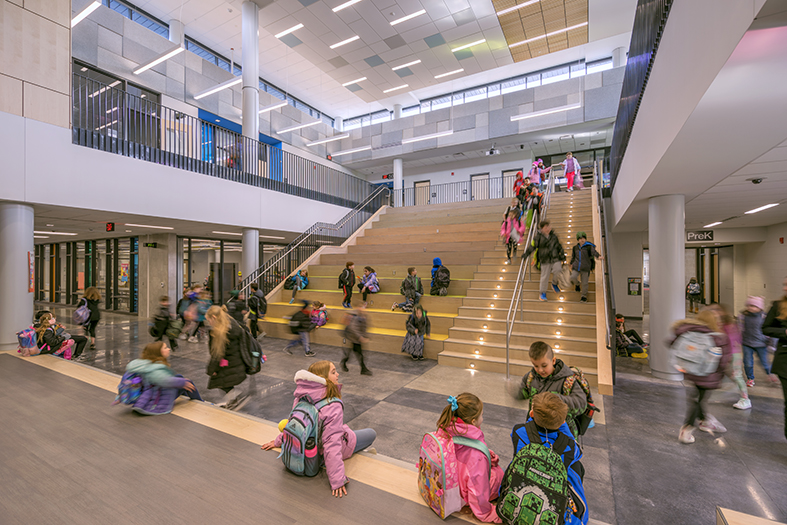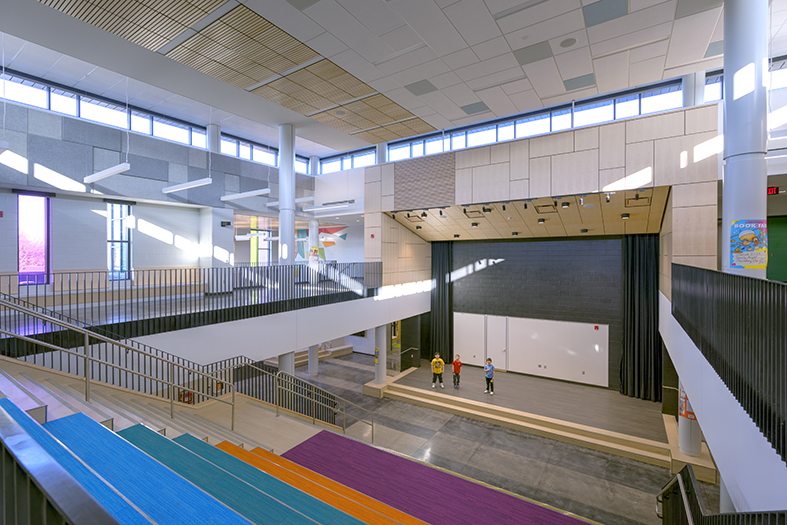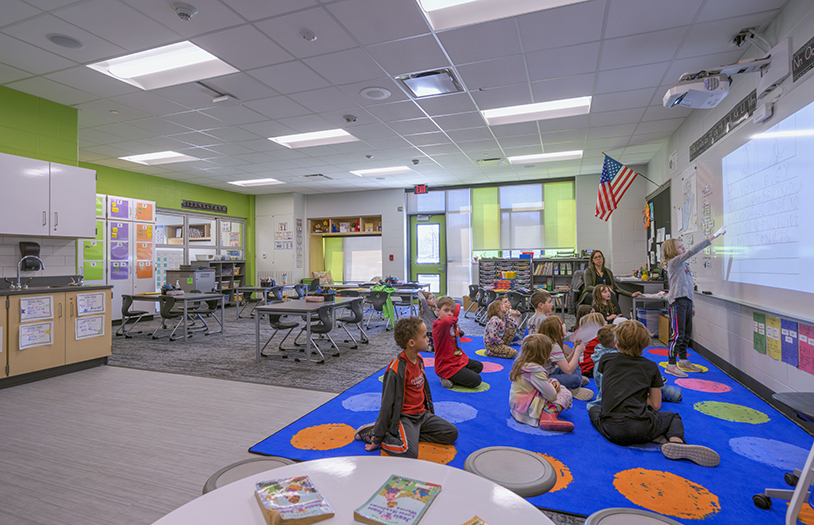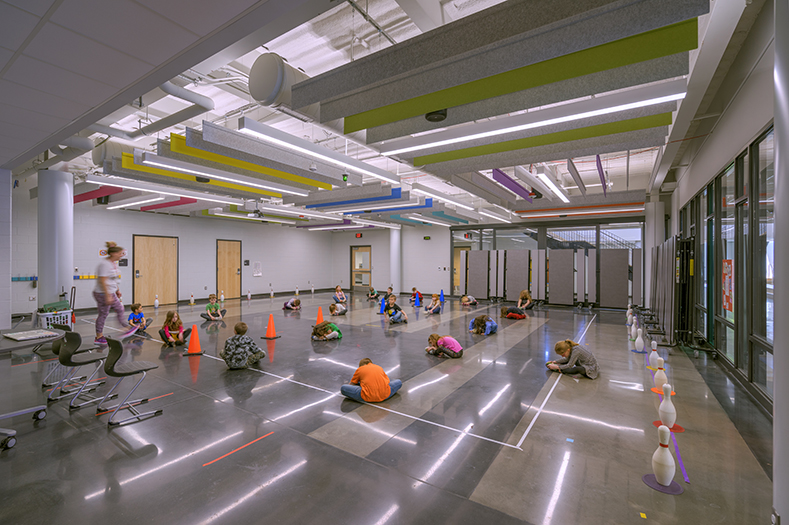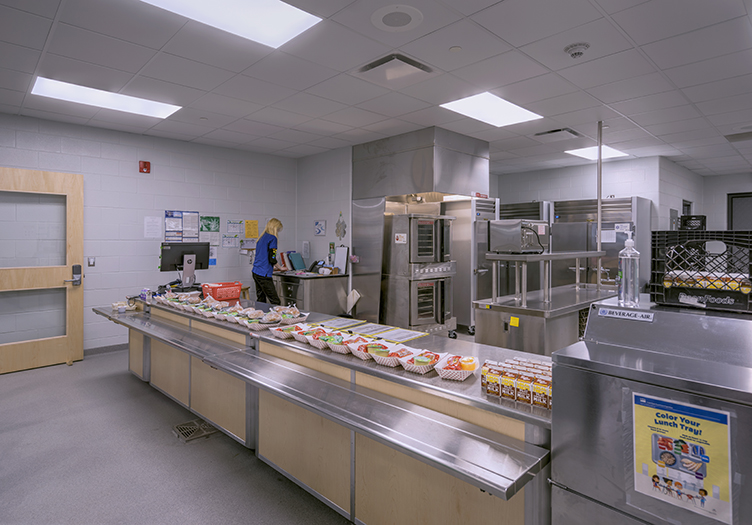Knowing the Walled Lake Consolidated School District wanted to relate high-impact instructional practices with high-impact learning, the design team led several visioning and community engagement sessions, as well as group meetings to provide feedback on how to proceed. As the team looked for solutions, it also investigated research and found nature and play were crucial in child development; those became the design cornerstones of Dublin Elementary, supporting social, emotional, deep, and hands-on learning for all students. Learning spaces are not only empowering, welcoming, and developmentally appropriate, but also inclusive and equitable.
The interior is organized as a colorful tapestry of learning communities for each grade level, surrounding the main spine of the school on two levels, Dublin Avenue and its focal point: the Learning Stair. This space brings students together and is a gathering place at the heart of the school. Grade levels are designed as small learning communities, providing a sense of belonging and identity. Each community is themed around nature, with the first floor around animals and plants found in the ecosystem and the second floor around elements of the ocean and sky. This storyline is graphically communicated with unique community logos and accent colors identifying each community where the colors are delineated through the interior and expand into the exterior of the building.
Classrooms within each learning community are designed with sliding glass partitions for easy collaboration, flexible furnishings, dedicated restrooms, student cubbies, and interactive technology with dry-erase and magnetic creativity walls. A reading nook in each classroom provides space for refuge and faces the outdoors. The interior elements and finishes are critical for creating a sense of place, wayfinding, and curiosity. Using whimsy and play to define the grade levels, the colors, graphics, and imagery create a sense of adventure and wonder among students and a world-expanding learning journey at Dublin.
With a focus on integrating architecture and learning, these elements produced adaptable spaces that help foster collaboration, peer accountability, and collective participation among students.

